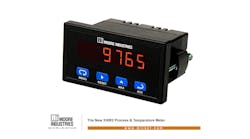BYPASS: An action taken to override, defeat, disable or inhibit a Safety Instrumented Function (SIF) operation.
CCF: (COMMON CAUSE FAILURE) The result of one or more stresses that cause failure of two or more separate channels in a multiple-channel system, leading to a SIF failure. Common cause can be associated with random or systematic failures – such as errors in device manufacture, specification, installation, operation or maintenance.
DANGEROUS FAILURE: Failure that has the potential to put the SIF in a hazardous or fail-to-function state.
DIAGNOSTIC COVERAGE: Ratio of the detected failure rate to the total failure rate as detected by automated diagnostic tests. Diagnostic coverage does not include any faults detected by periodic proof tests.
ENVIRONMENT: Operating environment where the SIF is installed, operated and maintained. This includes external environmental conditions, process operating conditions, communication robustness, support system quality, and process and system interconnections.
FAULT TOLERANCE: Ability of the SIF to continue to perform a required function in the presence of faults or errors.
INTEGRITY: Related to the risk reduction reasonably achievable by the SIF given its design and management. Integrity is limited by the rigor of the management system used to identify and correct equipment and systematic failures.
MECHANICAL INTEGRITY: A management system that assures equipment in an SIF is inspected, maintained, tested and operated in a safe manner consistent with its claimed SIL.
PHA: (PROCESS HAZARDS ANALYSIS) An organized effort to identify and evaluate hazardous events associated with processes to enable their control. A PHA is used to determine when an SIF is needed to reduce process safety risk, and also what SIL is required from the SIF.
RANDOM FAILURE: Hardware failure occurring at a random time caused by a variety of hardware degradation mechanisms.
RELIABILITY: Probability that the SIF operates according to its specification for a specified period of time under all relevant conditions.
SAFE FAILURE: Failure that has the potential to put the process or part thereof into a safe state or to maintain a safe state.
SAFETY FUNCTION: Function intended to achieve or maintain a safe state of the process with respect to a specific hazardous event. Examples are a tank-overfill condition or an overpressure condition that could result in the shutoff of a pump or valve.
SIF: (SAFETY INSTRUMENTED FUNCTION) A safety function allocated to a SIS with an SIL necessary to achieve the required risk reduction with respect to a specific hazardous event.
SIL: (SAFETY INTEGRITY LEVEL) Discrete level (one out of four) for specifying the safety integrity requirements of the SIF to be allocated to the SIS. SIL 4 has the highest level of safety integrity, and SIL 1 has the lowest. As the SIL increases, the more rigorous the required design and management practices.
SIS: (SAFETY INSTRUMENTED SYSTEM) A separate and independent instrumented system designed in accordance with ANSI/ISA 84.00.01-2004 and used to implement one or more SIFs.
STR: (SPURIOUS TRIP RATE) Expected rate (number of trips per unit time) at which a process shutdown or disruption occurs due to a safe failure within the SIF. Other terms used include nuisance trip rate and false shutdown rate.
SYSTEMATIC FAILURE: A failure that is not determined by probability but is introduced by an inaccuracy inherent in the SIF. This type of failure can only be eliminated through rigorous design and management of the SIF.
This glossary of terms and definitions was contributed by SIS-TECH (www.sis-tech.com), a U.S.-based manufacturer of safety-related products and systems.

